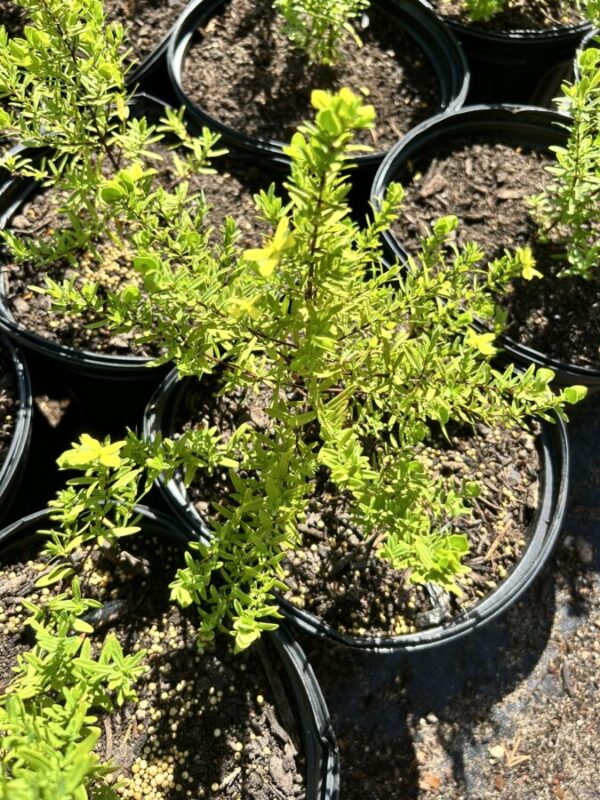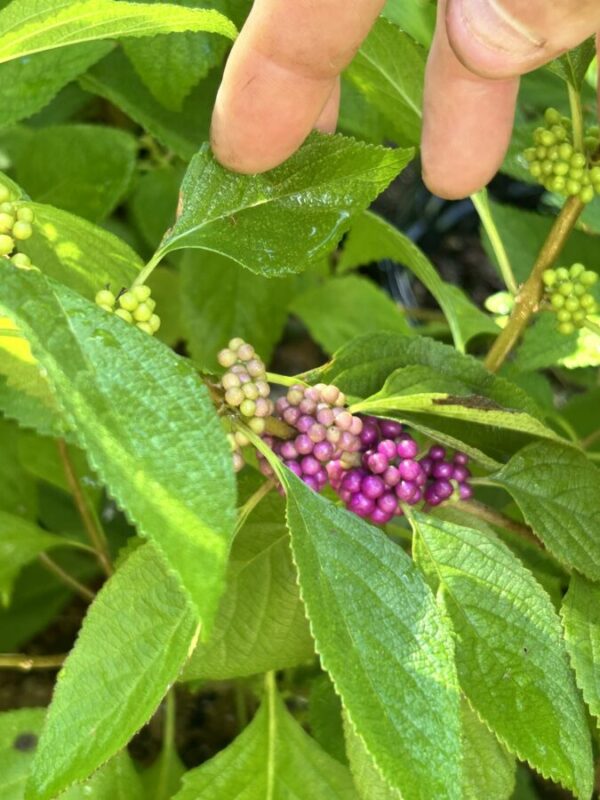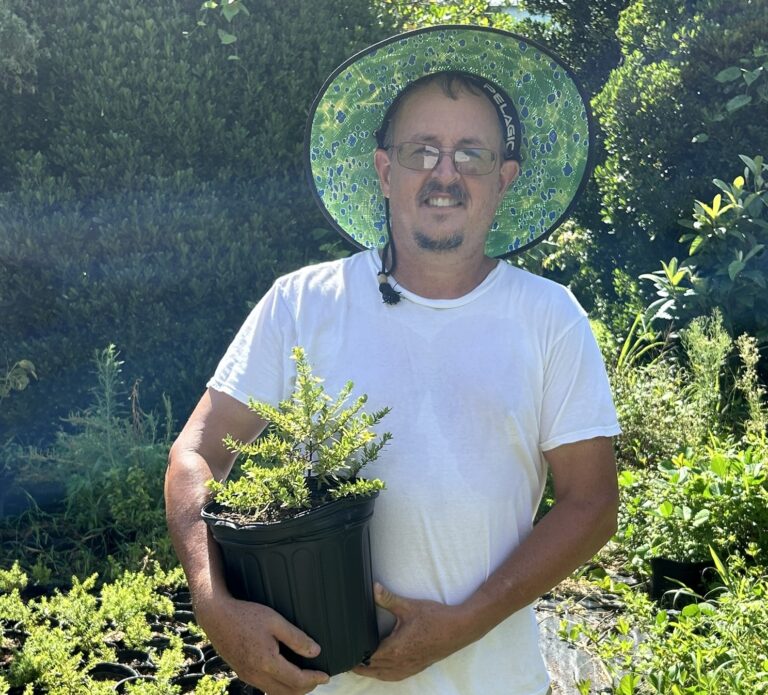Bermuda endemic plants are those which predate the arrival of The Sea Venture in 1609. They are naturally resistant to drought, salt, sun, and wind damage and require minimal maintenance.
The Bermuda cedar tree, renowned for its distinctive appearance and historical significance, is arguably Bermuda’s most beloved endemic plant and has played a critical role in the development of the island, but it is by no means our only endemic plant.
Our island is composed of a wide range of natural habitats considering it is only 54 square kilometers in size, and our ancestors walked daily through coastal forests, meadows and wetlands populated with a unique mixture of endemic plants including Palmetto, Darrell’s Fleabane, Yellow Wood, Royal Fern, Turkey Berry and St. Andrew’s Cross.
Despite their importance as the foundation of our eco-system however, several of these original inhabitants are now rarely sighted due to human development and encroachment from imported invasive plants such as Casuarina and Brazil Pepper.
Even worse, some of these plants are now so rare that the few remaining specimens are in danger of being uprooted by well-intentioned homeowners who don’t know what they are, or don’t recognize their importance to the landscape around their house.
IDENTIFYING AND PROTECTING ENDEMIC PLANTS
The Bermuda Plant Finder – An illustrated guide for Bermuda’s Indigenous and Invasive Plants which was developed by the Department of Environment and Natural Resources, contains color photos and a lot of helpful information regarding which plants will most likely thrive in the diverse variety of soil and weather conditions that are found around the island.
“These rare plants are listed just like old Bermuda houses,” says endemic plant specialist Robin Marirea. “Before you start cutting back old bushes on your property it’s a great idea to look them up in The Bermuda Plant Finder, to identify exactly what they are, because there are certain ones (like cedar trees) which you are not supposed to cut down,” he explained.
It goes without saying that it is important to ensure that you have correctly identified each of your plants to ensure that it really is an endemic species because it can be confusing to distinguish between endemic and naturalized (non-native) plants.
This is particularly true when it comes to cedar trees as there are currently several species of ornamental Juniper in Bermuda that are often confused with the Bermuda Cedar because they are particularly similar in appearance.
According to the Department of the Environment and Natural Resources only about 5% of the original Bermuda cedar population survived the juniper scale insect attack that occurred between 1946 and 1953, meaning that these particular plants are resistant to scale.
In consequence, growing cedars from the berries of these same trees (or their descendants) will ensure that your seedlings will also be resistant to the scale and develop a strong tab root (deep root system) that will help them withstand hurricanes.
While it is possible to clone cedar trees from tip cuttings, Mr. Marirea cautions that this form of propagation tends to produce plants with a much shallower root system which makes them vulnerable to the ravages of high winds.
 DECIDING WHICH SPECIES WILL THRIVE ON YOUR PROPERTY
DECIDING WHICH SPECIES WILL THRIVE ON YOUR PROPERTY
Ms. Lisa Green, Co-Author of A Practical Guide to Garden Management in Bermuda, recommends taking a drive around your own neighbourhood to see what is growing well in your area of the island and then checking with commercial nurseries and private growers to see what is available.
Asking friends and neighbours for permission to take cuttings or gather seeds is another way to introduce endemic plants to your garden that are likely to thrive, provided you have the time and the patience to propagate them yourself.
As tempting as it might be, however, it is important to resist the urge to tamper with or remove plants in our National Parks, Nature Reserves and Micro-Forests as these are all resting on protected land.
GROWING ENDEMIC PLANTS TO SHARE
“The local nurseries do stock some of the more common endemic plants,” says Ms. Green. “But the nurseries just can’t keep up with the demand – we really need more individuals who have space to propagate endemic plants on an individual basis.”
“Even if you already have all the plants that you need for your own landscaping, growing these plants as a pastime and sharing them with friends or donating them to the National Trust’s Annual Plant Sale is a great way to help ensure that these species will survive by making them more accessible locally,” she explained.
Church sales, House Sales and even Emoo and Facebook Marketplace are also great places to keep your eyes peeled for endemic plants that people have grown at home.
 PROPAGATION TIPS
PROPAGATION TIPS
“The key thing to understand is that you can’t just plant one endemic plant (or source all of your cuttings from one plant) and expect it to thrive,” cautions Mr. Marirea. “Ideally these plants need to be planted in clusters of 6-8 because some species generate both male and female plants, and you need both to be present in order for them to flourish.”
Additionally, it’s important to understand that some endemic species have a longer lifespan than others and you will need a garden management plan just as you would for any landscape project – a Bermuda Olivewood tree, for example, which can grow to a height of 25 feet will last lifetime, while a St. Andrew’s Cross shrub, which seldom grows more than 18 inches high, has a much shorter lifespan.
Resources: The Bermuda Garden Club has published three comprehensive books on gardening in Bermuda which turn up regularly at The Barn and Jumble Sales.
A Practical Guide to Garden Management in Bermuda, can be obtained free of charge at Waterville and the Bermuda Aquarium, Museum and Zoo – contains both information regarding how to rid your garden of invasive plants as well as tips for replanting with endemic species.
The Plant Finder Guide contains lots of helpful information regarding the best method and time of year to propagate each species http://www.gov.bm/sites/ default/files/plantfinder-april-2016.pdf .

